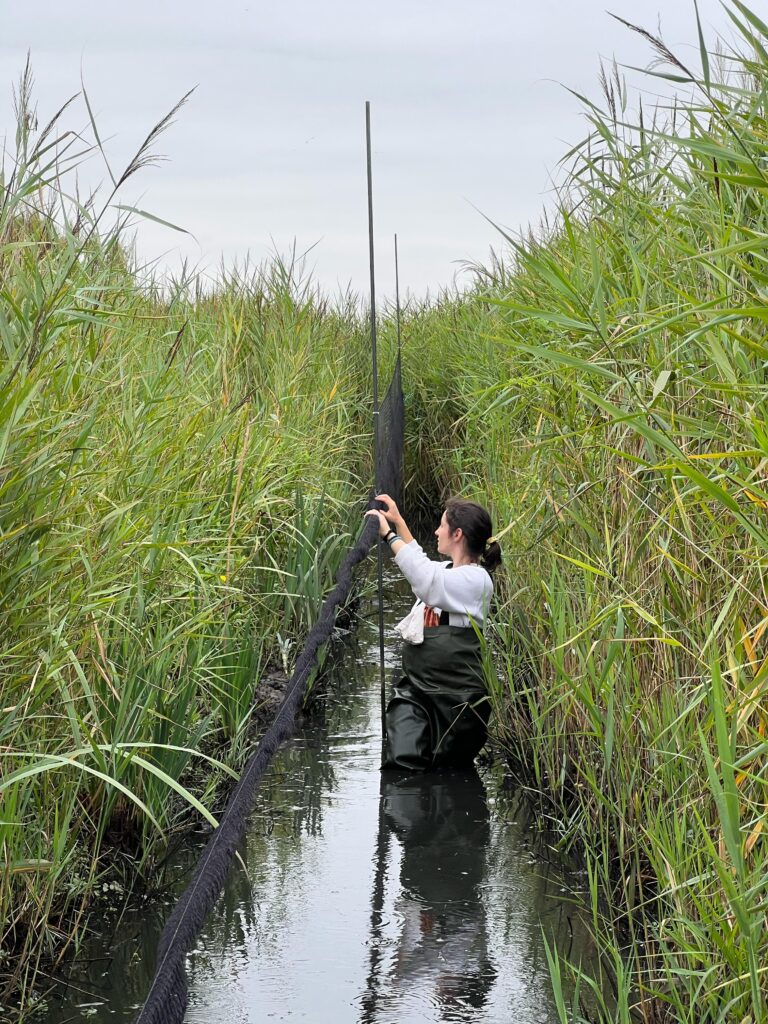
Blog: My first experience in a bird ringing station
-
AWOM
-
Biodiversity - Flyways
By Mallaury Lacombe, LIFE AWOM coordinator at Bretagne Vivante.
Within the framework of the AWOM project task force focusing on monitoring and evaluation of staging and wintering sites for the Aquatic Warbler, I had the opportunity to participate in ringing sessions at the Trunvel marsh, Brittany (France), from 11-15 August 2025.
During my week in Trunvel, I had the chance to see two Aquatic Warblers being ringed! What’s more exciting than seeing the LIFE AWOM star specie being ringed at one of the French ringing stations, who’s been involved in its conservation since the 1980s !
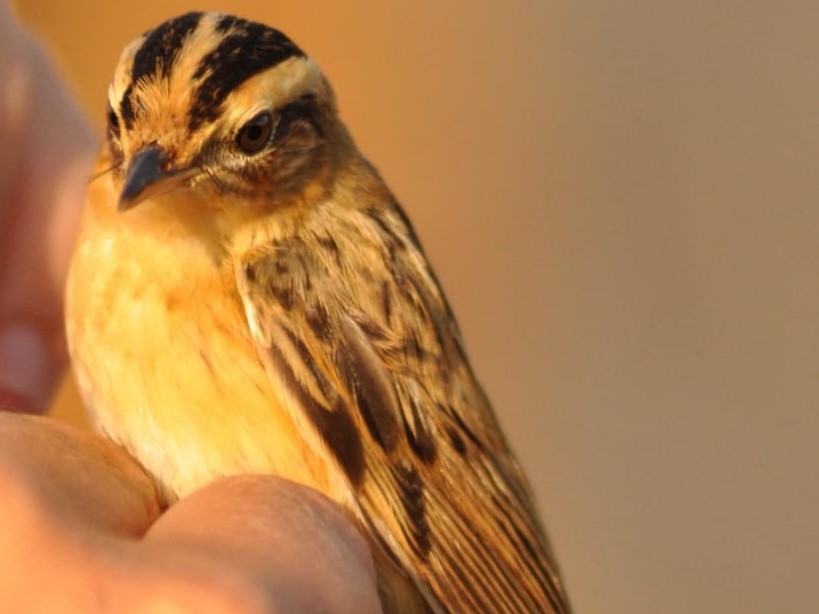
A historic marsh for French ringing of the Aquatic Warbler
Located in the Audierne Bay in Brittany, Trunvel marsh hosts one of the French ringing stations included in the LIFE AWOM project, particularly in the context of monitoring and evaluating French staging sites for the species.
The Trunvel ringing station is one of the oldest at a national level, developed by Bretagne Vivante and in operation since 1988! Back then, it spearheaded conservation efforts of the Aquatic Warbler in France, initiating discussions about a French “Species Action Plan“ (SAP) pioneered by Bretagne Vivante.
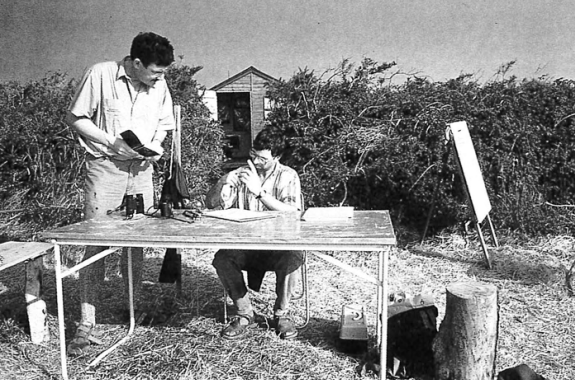
SAPs are governmental strategic operational tools aimed at ensuring the conservation or restoration to a favourable conservation status of wild fauna and flora species that are threatened or of particular interest. Today, the second SAP for the conservation of the Aquatic Warbler runs until 2031 and is coordinated by Bretagne Vivante.
Ringing from sunrise until noon, following a strict protocol
In France, ringing efforts for the Aquatic Warbler are standardized, using the protocol named “ACROLA“, which is managed by the French public center responsible for bird ringing and marking (CRBPO). This protocol sets up the installation of the stations and the data to be measured or noted.
On the field, ringing is operated by a station manager, who must possess a ringing permit. During my week in Trunvel, Gaetan Guyot and Meryl Gervot were the station managers.
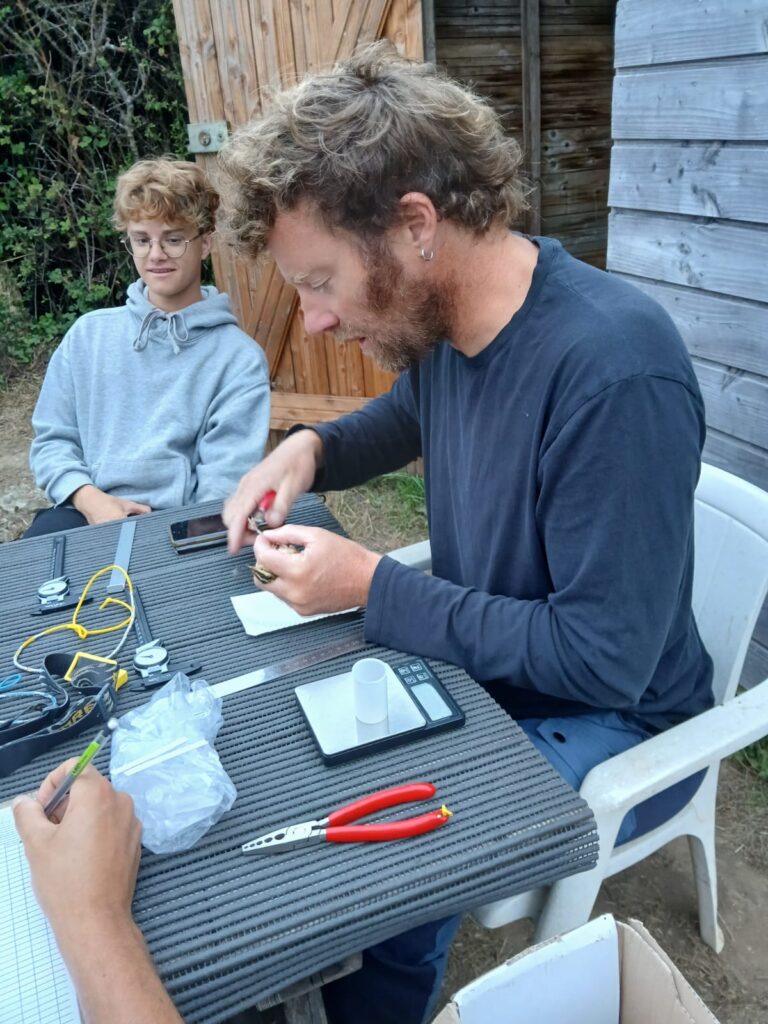
Ringing begins one hour before sunrise, with the opening of the nets. The station managers install tape lure on the nets in order to attract the birds into them. To not disturb the birds, we pay a special attention to the lighting, using a red light instead of a white one.
Birds are de-meshed and places in fabric pouches, and brought back to the station. Here again, the birds are handled with extreme care by the qualified station managers, to ensire that they are not frightened or injured.
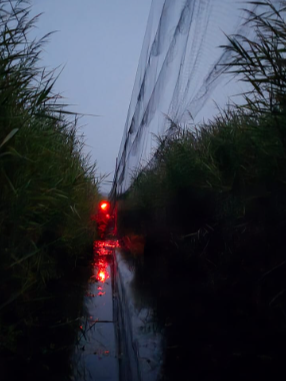
Each day, the same symphony. Nets are checked once every hour, or more frequently in case of light wind, dew or rain, by the team of ringers and helpers. In general, about five or six helpers are present each day at the station. During my stay, the team was composed of Bretagne Vivante’s civic service Zoé Blier and other volunteers (Axel, Erwan, Louis-Marie, Mona, Rozenn and Thibaud).
Carefully ringing birds for data collection and further getting to know the species
Each bird that is de-meshed from the nets is ringed, and different measurements are done according to the ACROLA protocol. While ringing, the priority is to identify the species and put a small ring on the bird’s leg.
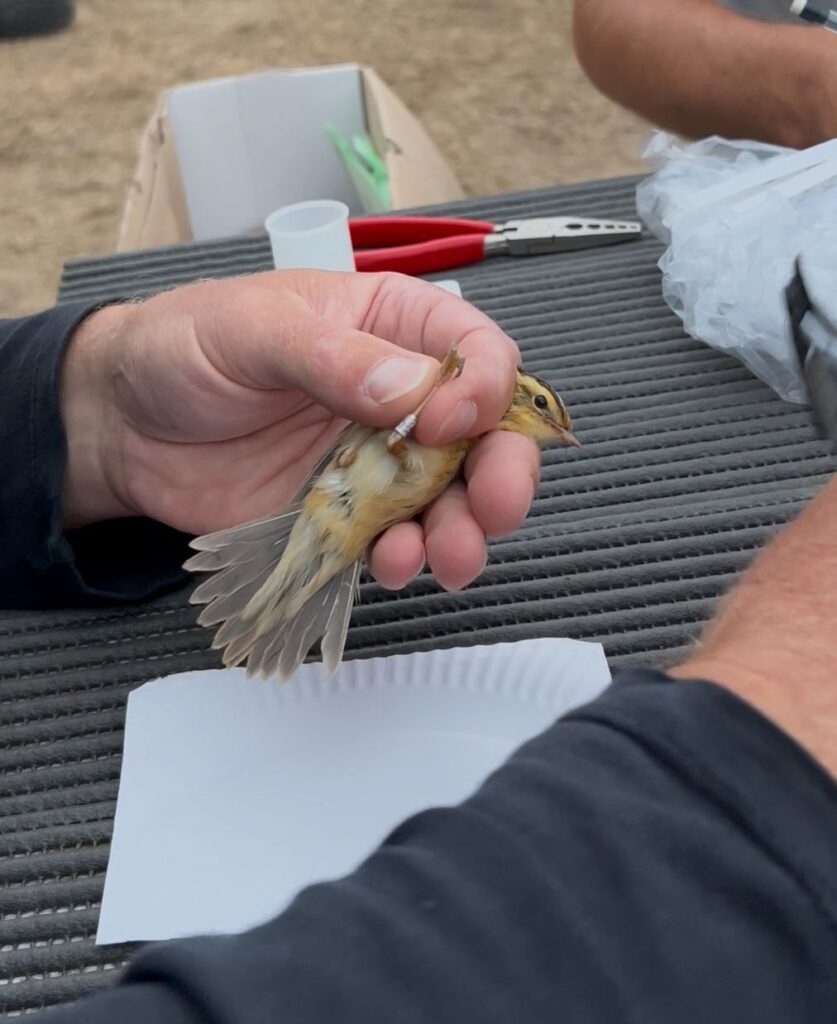
These steps and measurements enable to define the bird’s age. Finally, some biometric measurements are done, such as tarsus, wing chord, or mass. Adiposity is also determined by blowing slowly on the bird’s chest.
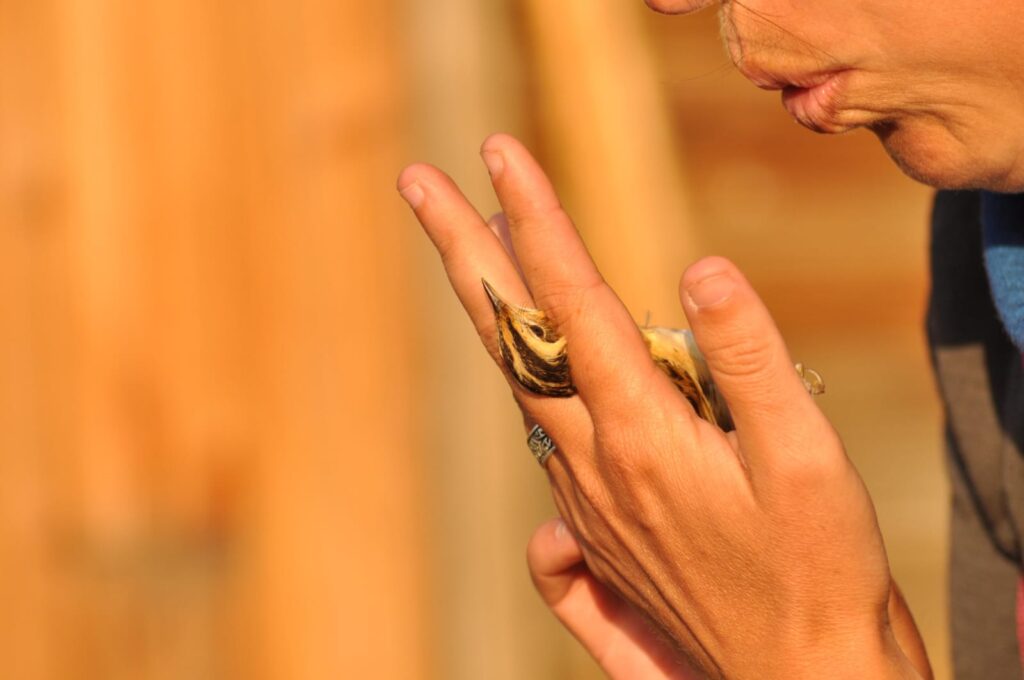
Every measurement is carefully noted on a data entry slip and later sent to the CRBPO, contributing to the national database managed by the French ringing center. After a few hours of ringing, nets are closed each day after the last tour, around 12pm.
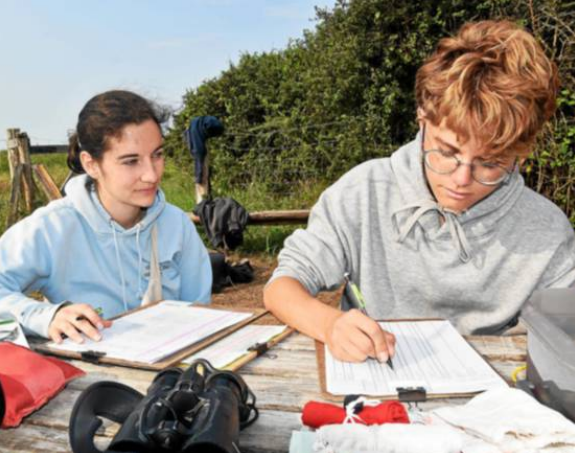
Conscientious data collection is important to accumulate as much information as possible about migration. This data collection is part of LIFE AWOM objectives, and will contribute to measure the restoration success, acting as an indicator. With other LIFE AWOM actions, ringing data analysis will indeed make it possible to confirm that restoration work done on stopover and wintering sites have been done correctly.
It was a great opportunity for me to see on the field what ringing is, in order to better understand it on a daily basis in my work as leader of the task force focusing on monitoring and evaluation of staging and wintering sites for the Aquatic Warbler!
